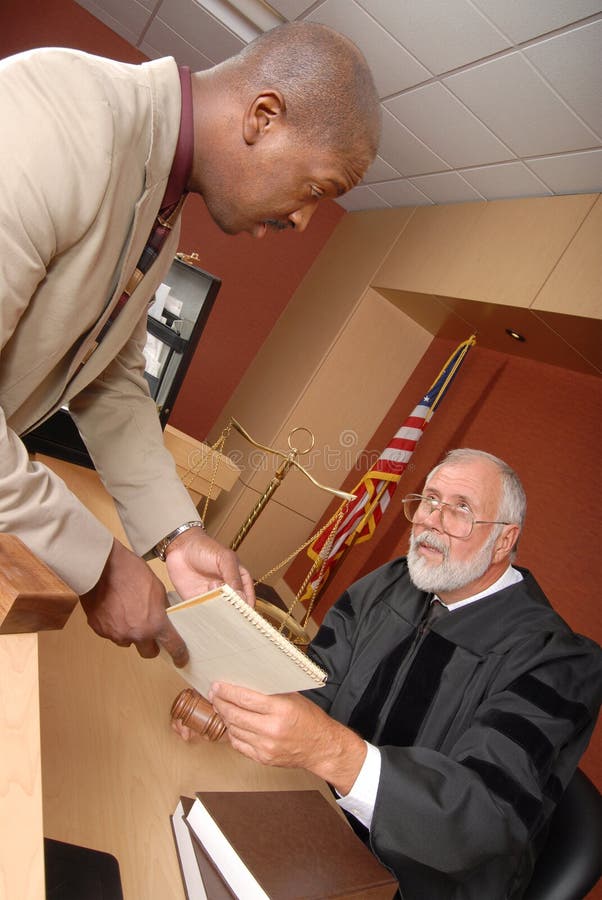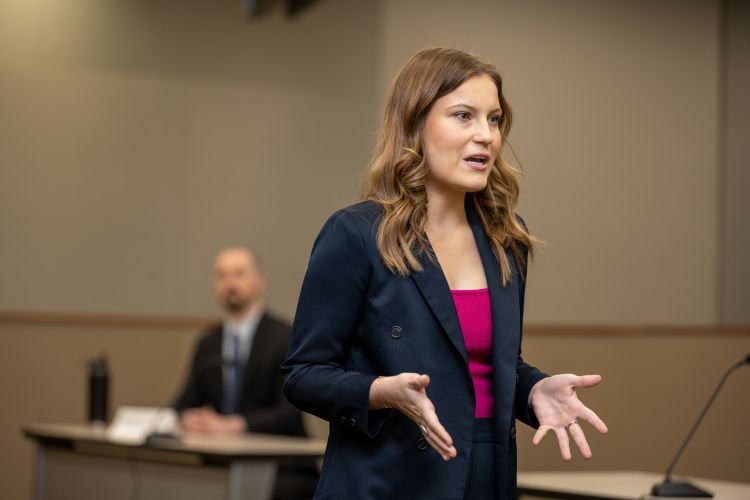Top Techniques for Creating Impactful Trial Presentations in Court Settings
Top Techniques for Creating Impactful Trial Presentations in Court Settings
Blog Article
Navigating the Complexities of Trial Presentations: Tips for Seamless Shipment and Engaging Disagreements
In the world of lawful procedures, the art of trial discussion stands as a vital determinant of success. The intricacies inherent in test presentations require a fragile balance of approach, skill, and skill.

Understanding Test Purposes
To successfully browse a trial, it is crucial to have a clear understanding of the objectives that require to be accomplished. Prior to entering the courtroom, lawful groups need to define their objectives and desired results. These goals function as leading concepts throughout the test, forming approaches and influencing decision-making procedures.
Recognizing test objectives involves an extensive analysis of the case, legal precedents, and the customer's benefits. Trial Presentations. It needs a meticulous exam of the realities, determining crucial concerns, and anticipating possible obstacles. By setting specific and measurable goals, attorneys can tailor their discussions and arguments to align with the wanted results
Furthermore, a clear grasp of trial goals allows lawful teams to prioritize evidence, witnesses, and legal arguments properly. It permits for the advancement of a meaningful story that resonates with the judge and court, enhancing the general instance presentation.

Organizing Proof Effectively
Having a clear understanding of test purposes lays the foundation for organizing proof effectively in legal process - Trial Presentations. By straightening the discussion of evidence with the preferred end results of the test, legal teams can strengthen their debates and improve their persuasiveness. One crucial element of arranging evidence is classification. Organizing evidence based on styles or relevance to particular lawful aspects can aid improve the discussion and make complicated details extra absorbable for the court or jury.
Another crucial element in arranging proof effectively is establishing a sensible circulation. Presenting evidence in a meaningful and consecutive way can aid develop an engaging narrative that sustains the lawful debates being made. Additionally, using aesthetic help such as charts, timelines, or graphes can better improve the organization of evidence and aid in making clear intricate partnerships or sequences of events.
In addition, guaranteeing that all proof provided is permissible and appropriate to the case is crucial. Inadmissible or pointless evidence can diminish the toughness of the debate and possibly damage the reliability of today party. As a result, a meticulous testimonial and selection process need to be embarked on to consist of just the most lawfully sound and impactful proof in the trial presentation.
Crafting Influential Stories
Crafting compelling narratives plays a pivotal duty in presenting convincing arguments throughout legal proceedings. A well-crafted narrative has the power to captivate the target market, click here for info evoke emotions, and inevitably guide the choice in support of today celebration. When constructing a narrative for a test discussion, it is important to develop a clear storyline that highlights key factors and attaches them in a systematic manner. Begin by describing the truths of the instance in an engaging way, making sure that the series of occasions is easy to follow. Introduce characters efficiently, providing history info that assists the target market recognize their activities and inspirations. Additionally, integrating vibrant descriptions and appealing language can bring the narrative to life, making it much more unforgettable for the judge click here for info and jury. By weaving with each other proof, statement, and legal disagreements into a persuasive and natural narrative, lawful experts can efficiently promote for their clients and increase the possibility of a favorable end result in the court room.
Mastering Visual Help
Efficient use aesthetic aids is essential to enhancing the impact and clearness of test presentations. Visual aids, when made use of strategically, have the power to simplify intricate information, reinforce essential factors, and leave an enduring impact on the discretionary. To master aesthetic aids in trial presentations, it is essential to guarantee that they are clear, concise, and appropriate to the debates being made.
When including visual aids, such as charts, graphs, photos, or timelines, into a trial presentation, it is crucial to keep them visually appealing yet expert. The visuals ought to match the spoken debates, providing a graph of the information being discussed without frustrating the target market with unneeded information.
In addition, experimenting the aesthetic aids ahead of time is critical to ensure a seamless shipment throughout the test. Acquainting oneself with the material, changes, and timings of each visual aid can help preserve the circulation of the discussion and stop technological problems that may arise.
Supplying Impactful Closing Arguments
A compelling closing debate serves as the conclusion of a trial discussion, enveloping the core narrative and convincing the court and jury in the direction of a desirable choice. Begin by outlining the major debates that support your client's setting, highlighting why the evidence offered throughout the test sustains your story.
In addition, including psychological appeal can even more reinforce your closing disagreement. By humanizing the instance and attaching on an individual degree with the decision-makers, you can stimulate empathy and understanding, affecting their understanding of the truths presented. Furthermore, stating the legal criteria that have to be met for a favorable judgment can strengthen the legitimacy of your position. Eventually, a well-crafted closing argument must leave an enduring perception, compelling the discretionary to regulation in your customer's support.
Verdict
To conclude, mastering test presentations includes recognizing objectives, organizing evidence, crafting narratives, using visual aids, and supplying impactful closing debates. By executing these approaches effectively, lawyers check this site out can offer their case effortlessly and make compelling arguments in the court. It is critical to navigate the complexities of test presentations with accuracy and ability to accomplish success in lawful process.
By lining up the discussion of proof with the preferred outcomes of the test, lawful teams can strengthen their debates and enhance their persuasiveness (Trial Presentations). To grasp visual help in trial discussions, it is crucial to make sure that they are clear, succinct, and pertinent to the debates being made
A compelling closing argument serves as the conclusion of a test presentation, enveloping the core story and convincing the court and jury towards a positive choice. Begin by laying out the primary disagreements that sustain your client's setting, emphasizing why the proof provided throughout the trial supports your story.In conclusion, understanding test discussions includes recognizing goals, arranging evidence, crafting narratives, using visual aids, and supplying impactful closing disagreements.
Report this page